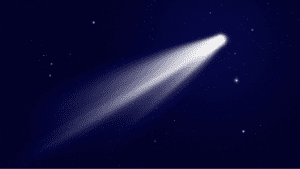The night sky over West Virginia was recently illuminated by a spectacular fireball, leaving residents in awe and astronomers intrigued.

NASA’s scientific investigation into the celestial event has yielded fascinating insights, unraveling the mystery behind the dazzling phenomenon that captivated observers.
The Fiery Visitor
On a seemingly ordinary night, a bright fireball streaked across the heavens, catching the attention of many witnesses in West Virginia. The celestial visitor, known as a bolide, is a type of meteor that burns brightly as it enters the Earth’s atmosphere due to friction with the air.
Meticulous Observation
NASA scientists and astronomers swiftly launched an investigation into the event, carefully collecting data from various sources, including eyewitness accounts, sky cameras, and satellite imagery. The meticulous observation allowed them to piece together the trajectory and characteristics of the fireball.
Origin of the Fireball
The extensive analysis led researchers to deduce that the fireball was caused by a small comet entering the Earth’s atmosphere. Comets are icy celestial bodies that originate from the outer reaches of the solar system. When they venture closer to the Sun, the heat causes them to release gas and dust, resulting in a bright and striking display as they encounter the Earth’s atmosphere.
Impactful Research
Studying such astronomical events provides invaluable data for researchers. The fireball’s trajectory and behavior offer critical insights into the composition and dynamics of comets. Additionally, understanding these occurrences contributes to our knowledge of potential hazards posed by larger space objects that could impact Earth.
Citizen Scientists’ Contributions
NASA’s investigation was significantly bolstered by the contributions of citizen scientists. Reports and videos shared by the public played a crucial role in mapping the fireball’s flight path, allowing scientists to pinpoint its probable origin and approximate size.
Fostering Curiosity and Understanding
The dazzling fireball event not only fascinated the public but also ignited curiosity and interest in astronomy and space science. Such occurrences serve as reminders of the vastness and beauty of the cosmos, encouraging people to explore the wonders of the universe.


NASA’s relentless pursuit of scientific inquiry has led to the resolution of the captivating fireball mystery that briefly illuminated West Virginia’s night sky. By harnessing data from various sources and embracing the collaboration of citizen scientists, the space agency continues to deepen our understanding of celestial phenomena. As we gaze at the heavens in wonder, events like these remind us of the endless marvels that await discovery beyond our Earthly boundaries.
